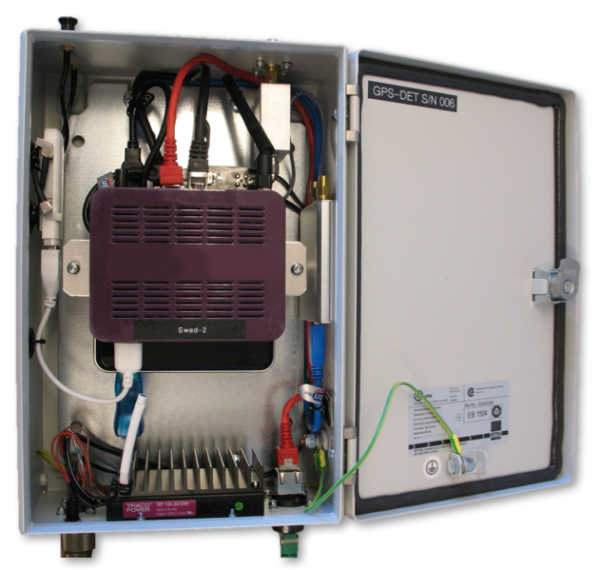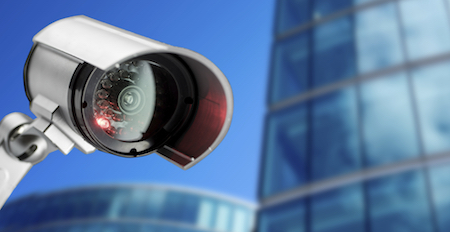The use of wireless . technology has exploded in recent decades and has led to the fact that most individuals today use such technology in some form. This is also a general trend in other parts of the society, such as security and safety applications and for machine-to-machine (M2M) communication. We can also see rapidly increasing use of wireless technologies in critical societal functions such as energy production, transport, logistics, banking and financial systems, and industrial and security applications. This despite the fact that civilian wireless technologies are very sensitive to electromagnetic interference signals.
Problems with radio interference caused by unintended interference signals from electronic systems have been known since the radio’s infancy and came into focus when radio broadcasting started almost 100 years ago. Some examples of wireless technologies for critical societal functions are in video-surveillance systems, remote control of industrial cranes and doors, burglary alarms, car keys, shop-lifting alarms and systems for positioning and navigation.
Radio interference can have different origins. The concept of “man-made noise” is usually used for general environmental noise generated in urban areas and close to industries. Locally generated interference signals come from the various electronic systems in the vicinity of a wireless receiver. Equipment that generates high levels of radio interference includes, for example, personal computers, charging equipment for battery powered products, microwave ovens and low-energy lamps. Locally generated noise is a growing problem that is increasing with the quantity of electronic equipment used in both private and commercial activities.
Another group of interference signals is from intentional jamming by transmitters in order to hinder or completely block wireless communication. The ability to efficiently use this kind of jamming techniques has previously only been with military actors but spreading to civilian actors in that dedicated jamming equipment now sold openly and inexpensively via the Internet. Already today jammers are used to knock out vital communications, positioning and alarm systems, both in connection to riots and criminal activities. GPS jammers are also used by commercial drivers (e.g. truck drivers) to avoid that the driving routes are tracked by the employers. These jammers can accidentally interfere with GPS receivers vital for lots of critical societal functions.
As several key functions in the society are increasingly dependent on wireless technology, it is of high importance to keep control of the radio noise environment within and adjacent to critical infrastructure. However, there are few available low cost systems that can monitor the electromagnetic environment in the vicinity of critical infrastructure today. What is generally used today is spectrum analyzers. Spectrum analyzers are a very qualified measurement tool but they are often used only to take snapshots of the electromagnetic environment and they are expensive to buy and operate autonomously over time. What is needed is continuous monitoring of the radio noise environment in the surrounding of critical systems.
Classic identification of radio interference
Historically and nowadays radio interference is detected in a reactive manner. It is first when the problem has occurred, the detective work starts. Very often the detective work starts with a user group that encounter a strange behavioral of a system or that a system malfunctions sometimes. The users reports these incidents in their organization and when it comes more and more incident reports some investigation maybe starts. After a while there can be an idea that maybe there is radio interferences that causes the malfunction of the system.
Then the identification and localization of the radio interference source begins. This is classically done with a spectrum analyzer or another qualified measurement equipment. Some snapshots are taken with the spectrum analyzer in the surrounding of the victim system where most of the incidents are reported. Hopefully, something is caught with the spectrum analyzer. But, often many measurements is required at different times and locations before anything is found. Sometimes, this can take very long time and hence be very costly. An example of this, is the incident at the Newark Airport where a Ford Pickup was passing by every day with a GPS-jammer activated. The GPS-jammer unintentionally interfered with the ground-based augmentation system (GBAS) at the airport. After tremendous work and several months later the driver was finally identified. The driver was finally fined $31,875 [1].
Electromagnetic environment measuring system – RF-Oculus
FOI is developing a electromagnetic environment measuring system, RF-Oculus, based on low cost commercial off-the-shelf (COTS) components [2] [3] [4] [5]. Basically, a software defined radio (SDR), a GPS receiver and computer are used. The RF signal is down converted and sampled in the SDR front end, which has the maximum sample rate of 61.44 MSample/sec at 12 bits. The analog gain, sample rate and instantaneous bandwidth of the SDR frontend are controlled from the computer. After the sampling of the RF-signal, the digital I/Q representation of the baseband signal are fed to the computer, as a 32 bit complex (16 bit for I respectively Q) sample through a USB 3.0 interface. The complex baseband signal is continuously transferred to the computer via the USB 3.0 interface. All baseband signal analysis takes place inside the computer, where different types of detection and classification algorithms is implemented.
A database is used to store information about the electromagnetic environment that the SDR experience. In the database several types of metrics are stored such as: the received power, Impulsiveness ratio, GPS Carrier-to-Noise ratio C/N0, satellite statistics, current position, time of day and detection statistics. A detection is made by the system if a predefined received power threshold is exceeded. In the event of a detection, the system stores the start and stop time of where the received power exceeds the threshold. Furthermore, the complex baseband signal is recorded for each of the detections made by the system. The stored complex baseband signal is used for further offline analysis such as frequency spectrum etc.
The measurement system runs 24/7 automatically and continuously monitors the electromagnetic environment in the surrounding of system. It is possible to remotely control and update the system through a secure remote connection over the Internet. The system can be connected to Internet with either an Ethernet cable or a wireless 3G/4G modem. Measurement data and statistics can also be downloaded to the office through this connection for further offline analyzes.

Continuously monitoring of the electronic environment
At sites where wireless technologies are widely used in safety critical systems there can be very costly if electromagnetic interference suddenly starts to interrupt a system. The consequences can be that all activity at the site is stopped and in some cases prohibited until the source of the interference is identified. With today’s methodology it can take up to several months until the source is identified, as in the Newark Airport example.
A more beneficial way of detecting the electromagnetic interference is a proactive approach. With a proactive approach there is a continuously monitoring of the frequency bands of interest. As the frequency bands are continuously monitored a common picture of the electromagnetic environment can be built in the monitoring system. The monitoring system can then use this information to detect aberration in the electromagnetic environment. Immediately as an electromagnetic interference occur in a monitored frequency band this is detected by the monitoring system. In such case, the system can automatically send an alarm to responsible users for the system that becomes interfered.
The developed monitoring system RF-Oculus has been used for several years at various sites in Sweden and monitored the civilian GPS-band, in [2] and [6] some examples are shown. In the case of an interference event the system reacts immediately and gathers metrics about the event. Statistics of the logged interference event can easily be generated for different time perspectives.
Conclusion
A general trend in today’s society is that the use of wireless technologies is increasing tremendously. Many of these wireless systems are though very sensitive to electromagnetic interference. The electromagnetic interference can be either unintentionally generated in other electronic systems or intentionally generated by jammers. Today’s reactive methodology of detecting, identification and localization of electromagnetic interference can be very time consuming and costly. At FOI a monitoring system RF-Oculus is under development. The system can in a proactive manner detect and send an alarm immediately as an electromagnetic interference occur in a monitored band. With proactive methodology one can be aware of electromagnetic interference immediately and the source of the interference can be identified much earlier.
Patrik Eliardsson Swedish Defence Research Agency (FOI)


